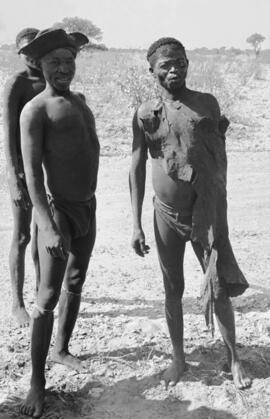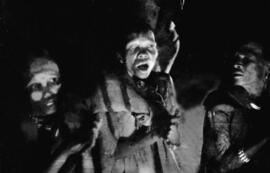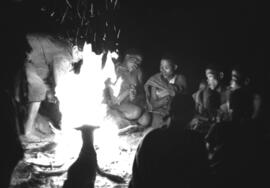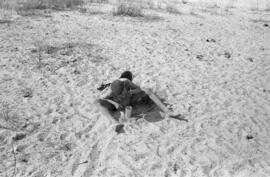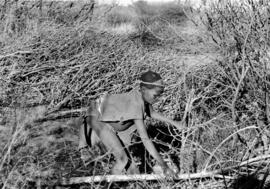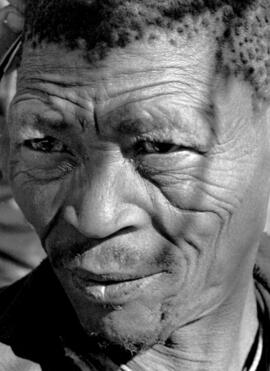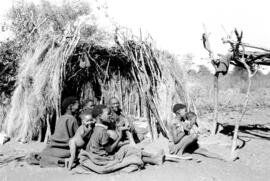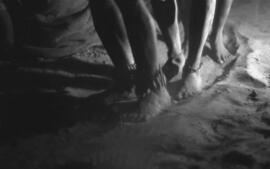Identity area
Reference code
Title
Date(s)
Level of description
Extent and medium
Context area
Name of creator
Biographical history
Created by: dduns009
Created on: 21/06/2011
Name of creator
Biographical history
Background of the Recorder
The Rock Art Research Institute had its small beginnings in 1979 when Professor David Lewis-Williams moved from the Social Anthropology Department at the University of the Witwatersrand to the Archaeology Department. A few years later, in 1983, he started a research project focused on surveying and recording the rock art of the Harrismith district, South Africa. This project was headed by Professor Lewis-Williams, with Bruce Fordyce as the only other researcher, and was funded by the Human Sciences Research Council (HSRC). This project grew and the necessity for interpretation of the rock art, not just finding the rock art sites, became a primary focus. In 1986 the entity became more widely recognized and, through a series of successful projects, achieved Unit status becoming the Rock Art Research Unit (RARU), with Professor Lewis-Williams as the director of the Unit. The HSRC still funded the Unit, and additional funding came from the Centre for Science Development, as well as from Wits University. Some of the people employed (full or part time, or as research students) by RARU are Terence Kohler (1984), Conrad Steenkamp (1984), Paul den Hoed (1984-1985), Zachary Kingdon (1986-1987), Colin Campbell (1987-1988), Thomas Dowson (1988-1994), Anne Holliday (1989-1995), Geoff Blundell (from 1993), Sven Ouzman (from 1993). In 2000, with the Professor Lewis-Williams's imminent retirement, Professor Barry Mendelow, then the Deputy Vice Chancellor, suggested that the Unit be ungraded to an institute. A unit is closed if the director leaves, but an institute can continue under different directorship. Institute status is the highest research status conferred by Wits University, and it was awarded to the Unit to recognise the high level of achievement in research publications and the breadth of research talent built up during Professor Lewis-Williams's twenty-one year directorship. Today the Rock Art Research Institute (RARI) is funded by the National Research Foundation, Wits University's own Research Fund and the Anglo-American Chairman's Fund. Some activities have been and are privately resourced. Dr Benjamin Smith became the new director of the Institute after Professor Lewis-Williams. He is still the director today. RARI is dedicated to developing an understanding of rock art by researching indigenous beliefs, rituals, customs and lifeways. Research is currently underway in all South African provinces as well as in Zimbabwe, Swaziland, Lesotho, Botswana, Mozambique, Zambia, Malawi, Tanzania and Kenya. Research therefore includes the rock arts of San and Pygmy hunter-gatherers, Khoi and Nilotic pastoralists, as well as of African farmers, such as the Chewa and the Northern Sotho. Underpinning this diverse research is a focus on the complex symbolism of African image-making. RARI has become one of the largest specialist rock art institutions in the world, attracting students and researchers from around the world. It is a leading centre for rock art training and offers undergraduate and post-graduate courses in rock art recording, interpretation and management. It is also active in rock art conservation and in the development and management of rock art tourism in South Africa. Included in these initiatives is the establishment of the Origins Centre in 2006 (www.origins.org.za), a world-class museum facility located in Johannesburg on the Wits University campus.
Repository
Archival history
Immediate source of acquisition or transfer
Content and structure area
Scope and content
Appraisal, destruction and scheduling
Accruals
System of arrangement
Conditions of access and use area
Conditions governing access
Conditions governing reproduction
Language of material
- English
Script of material
- Latin
Language and script notes
Physical characteristics and technical requirements
Finding aids
Allied materials area
Existence and location of originals
Existence and location of copies
Related units of description
Notes area
Note
It was during this time that Jurgen photographed pivotal moments in the lives of South Africans in the fifties. These photographs represent the life and struggle of South Africans during Apartheid and include important figures in South Africa's history such as Nelson Mandela, Moroka, Walter Sisulu, Yusuf Dadoo, Huddleston and many others who have been documented at key moments such as during The Defiance Campaign of 1952, The Treason Trial of 1958, The Sophiatown Removals and the Sharpeville Funeral in 1960.
His images also capture key personalities and events in the jazz and literary world such as the Sophiatown jazz scene with Dolly Rathebe, Miriam Makeba, Hugh Masekela and Kippie Moeketsi.
In 1964 Jurgen left South Africa for London and during the sixties and seventies freelanced as a photojournalist in Europe and America for various prestigious magazines. He also taught at the New School in New York, the Central School of Art & Design in London and the Hoch Kunst School in Hamburg. During this period he curated several major exhibitions including 'The Quality of Life' which opened the New National Theatre in 1976. Before returning to South Africa in 1985 Jurgen lived in London, Spain, New York and France. The photographs from this period represent a rich mix of social documentary work as well as some modernist, abstract images.
Jurgen has had a series of major shows including a Retrospective at the South African National Gallery in Cape Town in 1996, a Retrospective in Dublin,2000, New York solo show 2001, a group show at La Maison Europeene de la Photographie, Paris, 2002, Solo show Berlin in 2003, Budapest 2004, a Retrospective in Nicephore Niepce in Chalon Sur Saone in 2004, Neumunster- 55 Years Retrospective - Luxembourg 2005, Bochum Museum Retrospective 2005 and 2006 a touring exhibition of new work 'Voices from the Land' in South Africa. Numerous shows followed between 2007-2010 including London, Bayreuth, Koln, Belgium, Oslo, Tuscany, Kunsthalle Wien, Johannesburg, Hamburg, Osnabrueck, Paris
In 2007 Jurgen was awarded the Officer's Verdienst Kreuz First Class by the German President.
Jurgen has edited and published several photographic books including 'The Finest Photos from the Old Drum', 'The Fifties People of South Africa', 'Mandela & The Rise of the ANC', 'Voices from Robben Island', 'Sof'town Blues', and three new books in 2002 'The Black & White Fifties', 'The San of the Kalahari' & 'Soweto Today'.
'Witness - 52 years of pointing lenses at Life' was published in 2004 and in 2006 'Voices from the Land'. In 2007 he published 'Jazz, Swing & Blues - 56 years of SA Jazz' and 'Tales from Jozi '- new colour work of Johannesburg today and in 2008 he produced a Retrospective Photographic book of six decades of documentary photography in Europe, Africa and America, which was published by Hatje Cantz.
Together with his producer wife Claudia Jurgen established The Schadeberg Movie Company to produce a series of some 15 documentaries and dramas about South African social, cultural and political history.
Jurgen Schadeberg, sometimes known as 'The Father of South African Photography', is a principle figure in South African and World Photography. His major body of work, which spans 56 years and incorporates a collection of some 100,000 negatives, captures a wealth of timeless and iconic images.
Jurgen Shadeberg continues to actively work on new major photographic projects, books and exhibitions, to tour international shows and to make his own silver archival hand prints. He is now based in Normandy, France.


